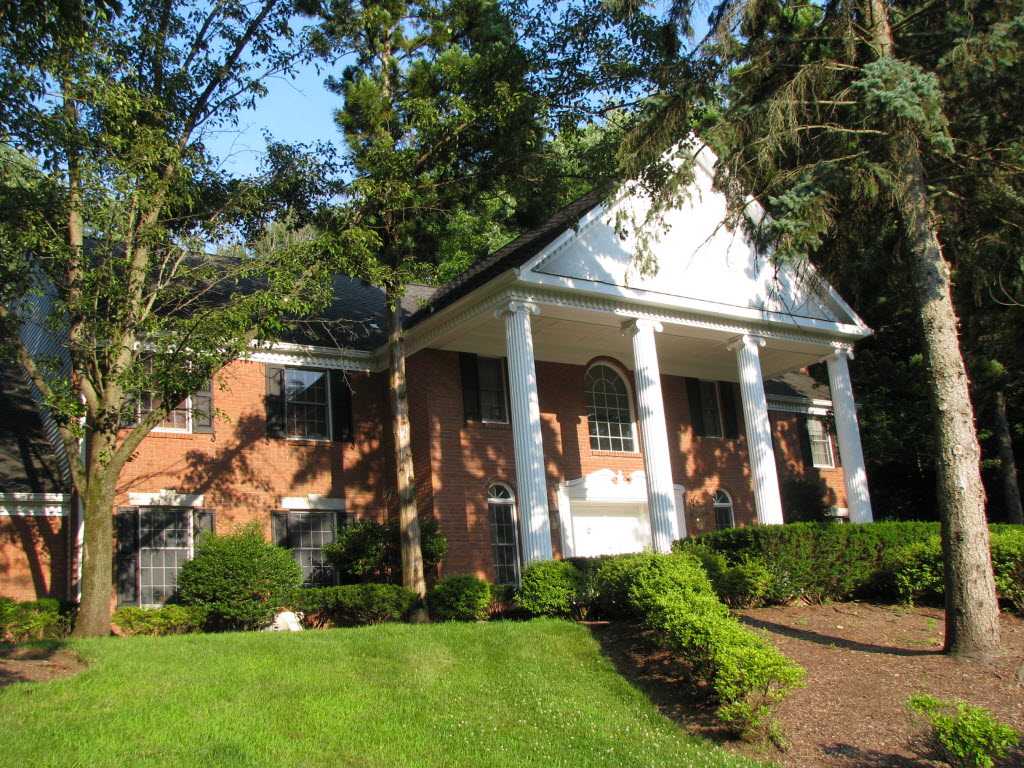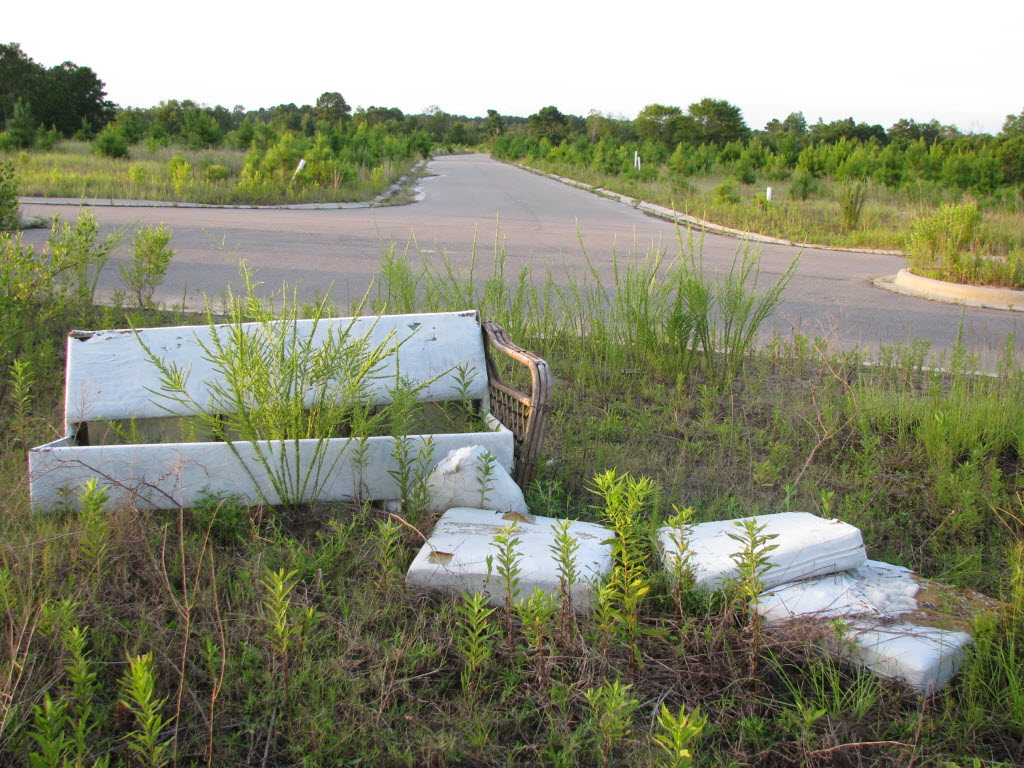PRETEND AND EXTEND:
ONE BUILDER, SIX BROKEN BANKS
James Bovino is a bank
killer.
His companies defaulted
on more than $300 million in loans and contributed to the failure of six banks
across the country during the Great Recession — including three in Southwest
Florida.
The son of a janitor,
Bovino rose to become chairman of his own bank and a prominent New Jersey
developer with two dozen multimillion-dollar projects under his belt.
Business associates say
he prided himself on being a family man. He once told The New York Times that
he watched only G-rated movies and had fired people for swearing in the
workplace.
But his squeaky-clean
exterior did not stop him from using strong-arm tactics — hiring a disbarred
attorney with ties to organized crime — to get what he wanted in the combative
world of New Jersey development. When the economy slid into recession, former
associates say Bovino diverted bank funds meant to pay subcontractors, and
regulatory documents and a government lawsuit show he participated in
"improper" deals that broke bank policies, hiding the fact that he
was no longer current on his loans.
Bovino, 71, is not
accused of any crimes.
The developer did not
return three calls left on his answering machine or a handwritten message left
in the mailbox outside his house — red brick with white columns — in Ho-Ho-Kus,
N.J.
 Builder James Bovino started his career as a school teacher and rose to become a builder with projects across the country. He now lives in this home in Ho-Ho-Kus, N.J.
Builder James Bovino started his career as a school teacher and rose to become a builder with projects across the country. He now lives in this home in Ho-Ho-Kus, N.J.
Staff Photo / Michael Braga
Bovino's rise and fall
provide a glimpse into how developers and bankers walked hand-in-hand during
the real estate boom, and how they stopped playing by the rules even before the
crisis hit.
In the end, developers
like Bovino not only contributed to the failure of 69 banks in Florida and
hundreds more across the country — their actions hurt ordinary workers and
small businesses.
In Bovino's case, at least
120 building contractors and subcontractors say they were left with more than
$13 million in unpaid bills, court records from six states show.
"Getting to the
end in 2008, there is collusion between bankers and their customers," said
Dick Newsom, who served as a regulator with the Federal Deposit Insurance Corp.
for 17 years. "Borrowers knew banks were desperate to hide bad loans, and
banks understood that developers would lie, cheat and steal — and do whatever
they had to — to survive."
The Herald-Tribune
began investigating Bovino and his businesses during its yearlong inquiry into
failed Florida banks.
Regulatory documents,
bankruptcy records, civil filings and interviews with 15 people show that
lenders ignored warning signs and funneled money to his companies even after
the recession took hold.
Among the findings:
• Bradenton's Freedom
Bank did not look at Bovino's total debts before lending one of his companies
$7.5 million in March 2007.
• Sarasota's Century
Bank lent another Bovino company $900,000 in 2008 to cover unpaid interest and
bounced checks.
• Cape Fear Bank in
North Carolina broke laws and regulations when it provided a third Bovino
company with $2.7 million in May 2008.
• Englewood's Peninsula
Bank signed off on a $12.1 million loan to another Bovino company as the world
economy was melting down in October 2008. The purpose of this loan, according
to regulatory reports, was to help Peninsula get 200 acres of repossessed land
off its books. Regulators called it an "improper sale," and analysts
say the deal was meant to trick regulators into thinking the bank's capital
stockpiles were deeper than they actually were.
But Bovino's story does
not end with failed banks and unpaid loans. For the past two years, he has been
scrambling to rebuild his real estate empire by repurchasing foreclosed
properties at a discount.
In North Carolina, a
company controlled by one of Bovino's associates bought 121 lots in a large
housing project outside Wilmington. In Florida, a company managed by another associate
bought two unfinished town homes and 11 vacant lots in Bradenton's Palma Sola
neighborhood.
Shay Hawkinberry, a
Sarasota real estate agent and interior decorator, said Bovino raised $1.1
million from a New York City investment firm to buy town homes in Florida and
start fixing them up. But she said Bovino diverted some of the money to one of
his projects in New Jersey.
Though Bovino's
investors say he had permission to use the money as he saw fit, Hawkinberry
said the diversion meant Bovino did not have enough left to pay nearly $40,000
to her and a flooring contractor.
"He told me to
find a bank that would lend him money, because that would be the only way I
would get paid," Hawkinberry said.
She introduced a Bovino
associate to three local lenders, and each turned him down.
"I did everything
I could," one of the mortgage brokers wrote in an email to Hawkinberry.
"But when you have partial tax returns, bank statements missing pages, no
idea what mortgages go to what property, it is really hard to get a loan
approved."
From the bottom up
Before he became a
multimillionaire, Bovino was a schoolteacher.
He began dabbling in
real estate in the 1970s, buying and building homes and apartments in his spare
time.
By the 1980s, he had
become a full-time developer, accumulating at least 11 apartment buildings and
three office structures in northern New Jersey by the decade's end.
 James Bovnio built this office building in Woodcliff Lake, N.J., to serve as his company headquarters until late 2008.
James Bovnio built this office building in Woodcliff Lake, N.J., to serve as his company headquarters until late 2008.
Staff Photo / Michael Braga
Friends and business
associates say Bovino fought to overcome polio as a child, which stunted his
growth. But what he lacked in height, he made up for in tenacity.
Bovino also had a gift
for relating to people at every level. That helped him on worksites, where he
interacted easily with construction workers, and in planning board meetings,
where he was able to charm public officials and concerned citizens.
It also helped when it
came to raising money from bankers and winning favor from politicians. In 1991,
New Jersey Gov. Jim Florio appointed him to the state's Bank Advisory Board.
But there was another
side to Bovino.
Creditors say he was
slow to pay his bills. In one well-publicized instance, he reneged on paying a
multimillion-dollar commission to Dennis Sammarone, the former chef for hotel
heiress Leona Helmsley.
Bovino was trying to
buy a vacant 16-acre tract in New Jersey near the George Washington Bridge that
was owned by the Helmsley family. But Helmsley, dubbed the "Queen of
Mean" by the press, would not return his phone calls. So he asked
Sammarone to intervene and the chef opened the door for Bovino to complete a
$46.3 million purchase in 2003.
When Sammarone did not
get the commission he was promised, he sued Bovino and eventually won a $13.9
million judgment.
Robert Cohen, who won a
$2.3 million judgment after Bovino did not fully pay for the purchase of a New
York stock trading firm, said Bovino had a motto: "Don't pay anyone until
they ask you three times."
"He was supposed
to give me $1.5 million upfront, but I don't believe he gave me half that
amount, and I had to twist his arm for the rest," Cohen said. "After
I won my suit, I talked to him about a settlement. He'd say a number. I'd say
OK. Then I'd never see the money."
One of Bovino's former
Florida executives, who asked to remain anonymous, was more succinct:
"If Jimmy owed you
$1,000, he'd tell you he'd pay you. But that might be in 10 years from now —
and that was OK with him."
Calling on Rigolosi
Newspaper reports and
lawsuits show that Bovino also had a tough side that he displayed when
competing developers threatened his turf, or when reluctant lawyers, planning
commissioners, judges and politicians needed persuading.
Robert Fraser stood to
make a large commission from the sale of land to a young developer who was
trying to build a New Jersey apartment complex in 1989. But when Bovino blocked
that purchase, Fraser sued.
He accused Bovino of
hiring an attorney to tie up planning board meetings and slow the developer's
efforts to secure approvals.
When that did not work,
Fraser said Bovino offered the developer $200,000 to abandon the project.
Unsuccessful once
again, Bovino turned to Vincent Rigolosi, a disbarred attorney with ties to the
powerful Genovese crime family.
Rigolosi was indicted
in 1981 and accused of helping Mafia crime boss "Cockeye Phil"
Lombardo bribe a police officer who was Maced outside a Jersey Shore restaurant
by Lombardo's son.
A jury later found
Rigolosi not guilty, but the New Jersey Bar Association stripped him of his law
license five years later. An opinion letter drafted by the the state Supreme
Court said that Rigolosi "actively participated in a criminal
conspiracy," and that his "conduct reveals a flaw running so deep
that he can never again be permitted to practice law."
Despite Rigolosi's
well-publicized history, Bovino repeatedly asked the ex-lawyer to help him work
out intractable problems over the years. Rigolosi — a former mayor of Garfield,
N.J., and Democratic Party chairman for Bergen County — had useful connections.
Indeed he was so
powerful, Fraser said, that he persuaded Fraser's first attorney to quit.
"Rigolosi calls my
attorney and tells him this is a B.S. lawsuit," Fraser said. "He
said: 'These young kids don't know what they're doing' and my attorney got
scared off. He tried to tell me to drop the case."
Fraser hired a new
attorney, who was also approached by Rigolosi. But this time, the lawyer kept
fighting for six and a half years.
The case was finally
dismissed when the state Supreme Court ruled that Bovino, who owned a parcel
adjacent to Fraser's, had reason to try to block the development.
A decade later, The
Record of Hackensack reported that Rigolosi was still working for Bovino. A
prominent fundraiser for Sen. Frank Lautenberg, Rigolosi convinced the senator
to visit Bovino's $1 billion development near the George Washington Bridge in
late 2007, the newspaper said.
But even Lautenberg,
who is now deceased, could not help that failed project get off the ground.
Coast to coast
Bovino was luckier
after the savings and loan crisis of the late 1980s and early 1990s.
He survived with his
New Jersey real estate holdings largely intact, and by 1998 was ready to expand
across the country.
His first stop was
Wilmington, N.C., where he began developing housing projects in and around the
coastal city. Then it was on to Arizona and Florida in the early 2000s and
Georgia and New York by the middle of the decade.
At the peak, Bovino's
companies were building homes in the suburbs of Phoenix and Atlanta, apartments
in Raleigh, N.C., town homes in Palmetto and upscale condos in Port Chester,
N.Y.
 James Bovino built this suburban housing development near Atlanta.
James Bovino built this suburban housing development near Atlanta.
Staff Photo / Michael Braga
Bovino also launched
Citizens Community Bank in Ridgewood, N.J., in November 2004. One of his
companies purchased an institutional trading firm the following year that
bought and sold stocks and bonds on the New York Stock Exchange, and he laid
out plans for building a 47-story skyscraper overlooking the Hudson River in
Fort Lee, N.J.
"Jimmy's biggest
downfall was that he had an opportunity to expand quickly — so he did,"
said Greg Cagle, a Georgia developer who helped Bovino buy a housing
development in the Atlanta suburbs. "He expanded too quickly and ended up
being spread too thin."
Smoke and mirrors
Bovino was always
meticulously dressed.
A former employee said
he would never wear a suit more than once before having it dry cleaned; his
shoes were regularly sent off for polishing at Saks Fifth Avenue in New York.
He maintained swanky
offices on Park Avenue, and even his flagship company's name — Whiteweld
Barrister & Brown — was meant to project an air of Old-World affluence.
But the names were all
made up.
A former employee said
Bovino chose Whiteweld because his father worked as a janitor for White Weld
& Co., a prestigious Boston-based global financial firm that can trace its
history back to the 1630s. The other two names were tacked on because they
sounded good together, the former employee said.
To further add to his
cachet, Bovino started a charity called The Whiteweld Foundation to benefit
children. It put on half-dozen concerts at Lincoln Center and Carnegie Hall
during the real estate boom with headliners that included Gladys Knight, Chuck
Mangione, Burt Bacharach and the Count Basie Orchestra.
 James Bovino, center, established The Whiteweld Foundation and often threw charity galas at Carnegie Hall and Lincoln Center in Manhattan. Bovino is seen on the foundation’s Web site with Polish President Lech Kaczynski.
James Bovino, center, established The Whiteweld Foundation and often threw charity galas at Carnegie Hall and Lincoln Center in Manhattan. Bovino is seen on the foundation’s Web site with Polish President Lech Kaczynski.
whiteweldfoundation.org
"It was all smoke
and mirrors, really," said Cohen, who sued Bovino after the New Jersey
developer failed to pay him fully for his New York investment firm. "The
guy was leveraged out the wazoo."
But bankers were
impressed by Bovino, and he had few problems borrowing when the economy was
strong.
In Georgia and North
Carolina, Regions Bank became one his major backers. In Florida, Bank of
America lent him more than $7 million to build town homes in Palmetto.
By 2006, however, big
banks were reluctant to keep fueling Bovino's insatiable demand for money.
Community banks stepped
into the void.
A former Century Bank
executive, who asked not to be named because of a new job she has secured, said
Century president John O'Neil was seduced by the fact that Bovino was the
chairman of his own New Jersey bank and had served on a state bank advisory
committee. O'Neil greenlit approvals for one of Bovino's companies to borrow $9
million in October 2006 to buy 274 acres in Manatee County.
"When the
president says, 'We're going to do business with this guy,' you don't look for
stuff that says we can't do this," the former Century executive said.
She said Century was
trying to increase its loan portfolio and ensure bonuses for top executives at
the time. "People do stupid things to meet their goals," she said.
O'Neil did not return
a call and an email message to his Fort Lauderdale attorney.
Bankers at nearby
Peninsula Bank and Freedom Bank were equally eager to meet Bovino's financial
needs.
Peninsula lent one of
his companies $2 million in May 2007 to develop town houses on the Hillsborough
River, while Freedom failed to properly analyze Bovino's finances when it
allowed one of his companies to borrow $7.5 million to pay off an existing
loan.
A former Freedom loan
officer, who also asked not to be mentioned by name because he is still
employed in the banking industry, said executives did not try to count up
Bovino's outstanding debts across the country before lending him money. They
merely ordered an appraisal and evaluated the loan based on what they felt the
collateral was worth.
Banking experts and
former regulators say that was a big mistake.
The FDIC warned banks a
year earlier to cut back on making speculative real estate loans to developers.
Regulators also made it clear that bankers needed to complete a global
financial analysis of a borrowers debts before extending money.
"With developers,
you have to do a really good job of identifying contingent liabilities,"
said Newsom, the former FDIC regulator. "Nearly every greedy banker looks
only at the project and ignores the other debts a developer might have."
'... regret what you
said'
A few months after
receiving loans from Freedom and Peninsula, Bovino's operations ran into
trouble across the country.
Speculator-driven
demand for housing in Arizona, Georgia and Florida started sliding in late 2006
and prices plummeted the following year.
One of Bovino's former
managers in Georgia said Bovino's development began losing money in 2007
because of high construction costs in the mountainous terrain outside Atlanta.
In Manatee County, one
of Bovino's companies was having so much trouble selling town homes at Oak
Trail that he had to take out personal loans and buy six of the units himself
to pay down some of what his company owed to Bank of America, court records
show.
 James Bovino sold four units in a Palmetto subdivision to his employees and another six units to himself after he couldn’t find other buyers.
James Bovino sold four units in a Palmetto subdivision to his employees and another six units to himself after he couldn’t find other buyers.
Staff Photo / Michael Braga
In New Jersey, he was
facing the lawsuit from Leona Helmsley's former chef and the Environmental
Protection Agency fined one of his companies $600,000 for failing to get
permits before installing a sewer system at one of his developments, court
records show.
About the same time,
The Record ran a front-page story in December 2007, about how Bovino's $1
billion development by the George Washington Bridge was dead in the water.
That was the time for
banks all across the country to stop funding Bovino, financial experts say. But
only a few adopted that approach.
A Regions Bank loan
officer cut off Bovino's funding in both Georgia and North Carolina in early
2008 after he refused to use collateral from one of his North Carolina projects
to shore up more than $6 million in Georgia loans.
"He stopped
funding our North Carolina project ... because we wouldn't agree with his cross
collateralizing," Bovino said in a deposition after Regions filed to
foreclose. "I told him: 'You'll never see that. And he said: 'You'll
regret what you said.'"
Under a
cease-and-desist order from state and federal regulators, Freedom Bank also
acted swiftly to foreclose on Bovino in May 2008.
But Cape Fear Bank
provided one of Bovino's companies with $2.7 million that same month to help it
pay back taxes and cover future interest payments.
That loan later went
into default and was mentioned as one that helped bring down the North Carolina
bank when the FDIC sued Cape Fear's officers and directors in April 2012.
"No credit history
was located in the file," the FDIC wrote in its suit. "Additional
deficiencies and violations identified on this loan include the failure to
adhere to applicable laws and regulations."
Century Bank executives
were equally negligent, according to a similar lawsuit filed by the FDIC.
Regulatory reports show
that one of Bovino's companies owed the bank $280,000 in back interest payments
in late 2007. But Century kept handing him more money.
The bank first lent the
company enough to cover unpaid interest in March 2008. Then in September, it
lent Bovino's company another $641,000 after the company sent the bank a string
of bounced and uncashed checks.
"That's called
'pretend and extend,' " said Irv DeGraw, a banking and finance professor
at St. Petersburg College. "The bank was playing a little game of
make-believe in the hope that the market would turn and everything would be
OK."
Peninsula Bank took
that game to a higher level.
One of Bovino's
companies defaulted on a $2 million loan from the bank in early 2008. But
instead of foreclosing, Peninsula worked out a deal in which it would renew the
loan as long as one of Bovino's companies took 200 acres in St. Lucie County
off the bank's hands.
Peninsula had
foreclosed on the former owner and did not want to take a loss. So it
transferred the land to Bovino's company and lent him $12.1 million in October
2008 — just as the economy was reeling from the collapse of AIG and Lehman
Brothers.
"That's
outrageous," said Newsom, the former FDIC regulator. "He's purchasing
a property to mask a loss to the bank."
Accelerate
Bankruptcy and civil
court records show that at least 120 subcontractors have demanded that Bovino's
companies repay debts totaling more than $13 million.
These include drywall
contractors, plumbers, cabinet makers, pool maintenance companies, roofers,
engineers, architects, tile companies, masons and electricians in six states.
The majority have won judgments in their favor.
One of them, a general
contractor who paved roads and installed a sewer system at Bovino's 400-lot
development outside Wilmington, N.C., is out just over $1 million, according to
a judgment filed in New Hanover County.
 James Bovino bet and lost on a 400-lot development in Brunswick County, N.C. It remains vacant.
James Bovino bet and lost on a 400-lot development in Brunswick County, N.C. It remains vacant.
Staff Photo / Michael Braga
"Instead of
telling us to stop when he knew he was in trouble, he told us to
accelerate," said Robert Thomson, a Wilmington general contractor.
"So we started putting in the really big-money stuff like sewers and
sidewalks."
That was classic
Bovino, according to two of his former managers.
As he began running out
of money, those managers say Bovino pressed subcontractors to hurry up and
finish their work so he could submit their invoices to the bank for payment.
But the managers said Bovino did not always use the bank funds to pay his
subcontractors as required by law.
Ronnie Lewallen, a
former executive at Bovino's housing development in the Atlanta suburbs, says
his predecessor "did everything in his power to get subs paid before Jimmy
ran out of money."
This angered Bovino and
his New Jersey executive team, and they quickly clamped down on the payments.
"When he
left," Lewallen said, "they put me in charge. But they didn't let me
control the money. I'm owed more than $100,000."
Though it was not
uncommon for subcontractors to go unpaid during the Great Recession, developers
understand that their long-term reputations are tied to their ability to pay
their bills.
Bovino does not seem to
have learned that lesson.
 An associate of builder James Bovino bought these Bradenton town homes in March, but was hit with liens after failing to pay subcontractors.
An associate of builder James Bovino bought these Bradenton town homes in March, but was hit with liens after failing to pay subcontractors.
Staff Photo / Michael Braga
In March, he raised
$1.1 million from John Bivona, a New York attorney and owner of Felix
Investments. Manatee deeds show he used $950,000 to purchase a pair of town
homes and 11 vacant lots in Bradenton's Palma Sola area.
That left $150,000 to
fix up the town homes and get them ready for sale, says Hawkinberry, the
interior decorator who helped Bovino find the property.
But Hawkinberry said
Bovino diverted some of the money to a house he was building in New Jersey, so
there was not enough left to pay the bills.
In an email to
Hawkinberry, Bovino explained that he intended to repay the money as soon as he
sold the house in New Jersey. But a "greedy lawyer" took it to pay
one of Bovino's outstanding debts.
"That's what
happens when they find out our past history," Bovino wrote.
Bivona, who provided
the $1.1 million, told the Herald-Tribune he was not concerned about the
diversion of funds.
"He didn't do
anything he shouldn't have done," Bivona said. "If he needed to use
the funds for something else, that was fine with us."
Bivona — a licensed
attorney — also disputed owing anything to Hawkinberry.
"That's a B.S.
lien," he said. "That money is not owed her."
But Hawkinberry has
kept all of Bovino's emails and telephone messages, and they tell a different
story.
In them, Bovino
acknowledges he owes her money but says the only way she is going to get paid
is if she helps him get a $500,000 loan using the two town homes as collateral.
Hawkinberry
consequently referred Bivona and his wife to 1st Manatee Bank, Movement
Mortgage and C1 Bank. But they all declined to make the loans.
Throughout the process,
Bovino told Hawkinberry he intended to use some of the funds from the loans to
pay off debts owed to Iberia Bank, which acquired Century Bank's assets after
that Sarasota lender went under in November 2009.
"That's what I'm
concerned about now," he said in a voicemail message.
He also told Hawkinberry
not to say anything to Bivona.
But when it became
clear that Bovino was planning to take proceeds from the loan to pay off past
debts, Hawkinberry called Bivona.
That made Bovino angry.
"If you insist on
avoiding my directions, I will make sure your association with the company is
terminated!!!" Bovino wrote in an email message. "And let me say
this, if Mrs. Bivona's loan is denied and I find out that you had a
conversation with the bank that caused it to be denied you will be hearing from
our attorney very quickly."
Hawkinberry told Bivona
that if Bovino remained involved in the property, it would be difficult to sell
the units. She told him she had a buyer willing to purchase the property for
more than Bivona's company paid.
But Bivona told the Herald-Tribune
he was not interested in that offer.
"We're not going
to be frightened into doing that," he said.